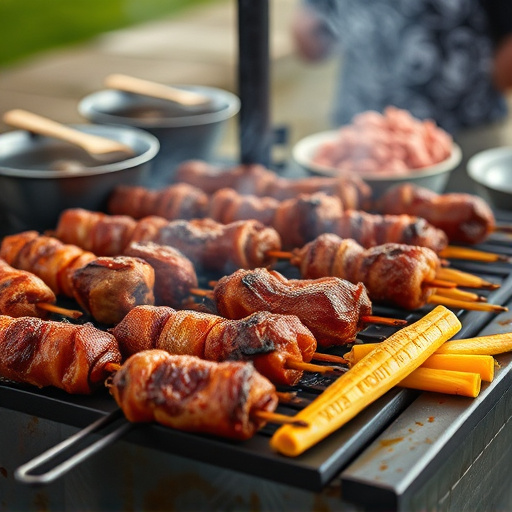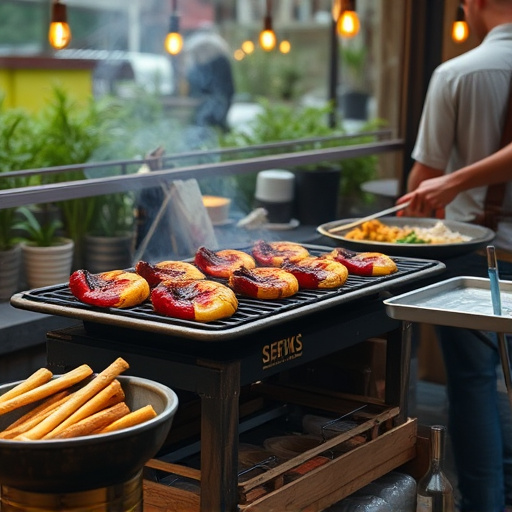Selecting USDA Prime or Choice brisket cuts between "point" and "flat" ensures ideal flavor and tenderness. Dry rub massaged into meat before slow-cooking at 225°F/107°C with a mix of wood types creates signature smoky BBQ brisket recipe.
“Unleash your inner barbecue master with the ultimate guide to achieving tender, smoky BBQ brisket. This step-by-step journey delves into the art of selecting the ideal cut, crafting a potent dry rub, and mastering smoking techniques. Discover how these elements combine to create a mouthwatering brisket recipe that will leave your taste buds craving more. Get ready to transform your backyard barbecue into an unforgettable culinary experience.”
- Selecting the Perfect Brisket Cut for BBQ
- Dry Rub: The Key to Smoky Flavor
- Smoking Techniques for Deep, Rich Barbecue Taste
Selecting the Perfect Brisket Cut for BBQ

When it comes to achieving that deeply smoky, tender barbecue taste in your brisket recipe, choosing the right cut is key. Opting for a good quality, well-marbled “point” or “flat” cut will ensure juicy, flavorful meat that melts in your mouth. The point section, with its rich fat cap, contributes significantly to the overall flavor and tenderness, while the flat offers a leaner, but still succulent option.
Consider looking for brisket cuts labeled as USDA Prime or Choice grades, which guarantee higher quality and more consistent results. Properly selecting your brisket cut forms the foundation for an exceptional BBQ experience, setting the stage for hours of slow-cooking bliss that will result in a mouthwatering, deeply smoked delicacy.
Dry Rub: The Key to Smoky Flavor

Dry Rub is a crucial element in achieving a deep, smoky barbecue taste for your brisket. This blend of spices—typically including salt, pepper, paprika, garlic powder, and brown sugar—is massaged into the meat before cooking. The process enhances the natural flavors of the beef and creates a complex, savory profile that’s characteristic of authentic BBQ brisket recipes.
The dry rub acts as a barrier between the meat and direct heat sources, allowing for slow-cooked, moist results. As the brisket smokes, the spices caramelize and penetrate the muscle fibers, imparting a rich, smoky aroma and flavor that’s hard to replicate with other cooking methods or wet rubs. This technique is what sets apart exceptional BBQ brisket recipes from ordinary ones—a subtle art that requires precise timing, high-quality ingredients, and a deep understanding of the seasoning’s impact on the final dish.
Smoking Techniques for Deep, Rich Barbecue Taste

To achieve a deep, rich barbecue taste in your brisket, smoking is an art that requires time and precision. One effective technique is to use a combination of wood types—hickory, oak, and mesquite are popular choices—to impart diverse flavors. Smoking at lower temperatures (around 225°F/107°C) for extended periods allows the brisket to cook slowly, ensuring a tender texture and enhancing the smokiness. This method, known as low-and-slow, is key to developing a complex flavor profile.
Another trick is to create a hot zone and a cool zone within your smoker. By placing the brisket in the cooler section initially, you prevent it from overcooking or burning while letting the smoke fully permeate the meat. Once the internal temperature reaches around 165°F/74°C, move the brisket to the hotter side for a brief period to develop a beautiful crust, locking in those savory juices. This dynamic approach ensures your bbq brisket recipe turns out perfectly every time.
